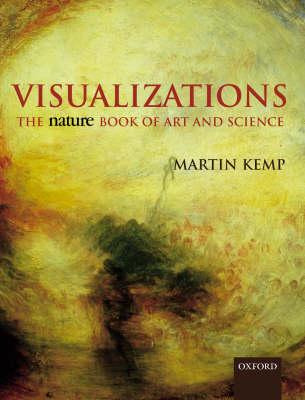Overview
"Martin Kemp is the author of the widely acclaimed weekly pages ""Art and Science"" and ""Science and Image"" which have been appearing in Nature since 1997. In this visually stunning book, he brings together these fascinating articles discussing the interactions between the visual arts and science. A lively introduction describes Kemp's novel approach to the subject. Instead of describing the influence of art on science or vice-versa he emphasises the structural intuitions shared by artists and scientists. In over 75 articles, each accompanied by one or more full colour images, a wide range of art and science are covered; from Leonardo's Mona Lisa to Robert Hooke's stunning image of the eye of a fly in a microscope, and from abstract mathematics to the illustrative modes the horror movie and commercial logos. The study of the relationship between the visual worlds of the artist and the scientist is placed on a new basis. The result is a unique and fascinating book which will be of great interest to artists and scientists alike."
Full Product Details
Author: Mr Martin Kemp
Publisher: Oxford University Press
Imprint: Oxford University Press
Dimensions:
Width: 18.90cm
, Height: 0.30cm
, Length: 24.60cm
Weight: 0.798kg
ISBN: 9780198564768
ISBN 10: 0198564767
Pages: 218
Publication Date: 01 February 2001
Audience:
College/higher education
,
Professional and scholarly
,
Undergraduate
,
Postgraduate, Research & Scholarly
Format: Hardback
Publisher's Status: Active
Availability: To order

Stock availability from the supplier is unknown. We will order it for you and ship this item to you once it is received by us.
Reviews
Simplistically put, science tries to create a meaningful picture of the world. In this book, Kemp, professor of the History of Art at Oxford University and a trained scientist, draws on his regular articles in the journal Nature. In each of more than 70 pieces here the starting point is the image. Sometimes this is a work of art in the classic sense, like Leonardo da Vinci's Mona Lisa. Sometimes it is a 'scientific' image, from da Vinci's drawing of a foetus in the womb to Feynamn Diagrams. Some are from beyond the range of normal human vision, such as NASA radar images of volcanoes on Venus or the eye of a fly vastly magnified. The pictures are stunning and lead into erudite discussion of the relationship between art and science and the underlying themes shared by artists and scientists. There is comment here about why it is that we gain pleasure from any visual image - a beautiful tree or suset is, after all, just wood or reflections in the clouds. The author believes that the aesthetic impulse is 'part of the feedback mechanism that reinforces our hugely demanding attempts to make coherent sense of those natural orders with which we can and must work to survive'. In any event, any image has an element of what we call art in it, whatever its bare scientific purpose. It is from the two aspects that we build up our picture of the world, both in terms of what it is and its wonder and beauty. Beautifully illustrated with full colour photographs alongside every essay, this book looks at microscopic images, vistas of comic scale, people, places and scientific models and devices - as well at some of the world's great art and great artists. It is a feast for those whose interests span the two worlds of art and science. (Kirkus UK)
Author Information
Martin Kemp is Professor of the History of Art at the University of Oxford. He is the editor of The Oxford History of Western Art (OUP, March 2000), and the author of many books and articles on the history of art. Having trained first as a scientist, he has a special interest in the connections between science and art.



